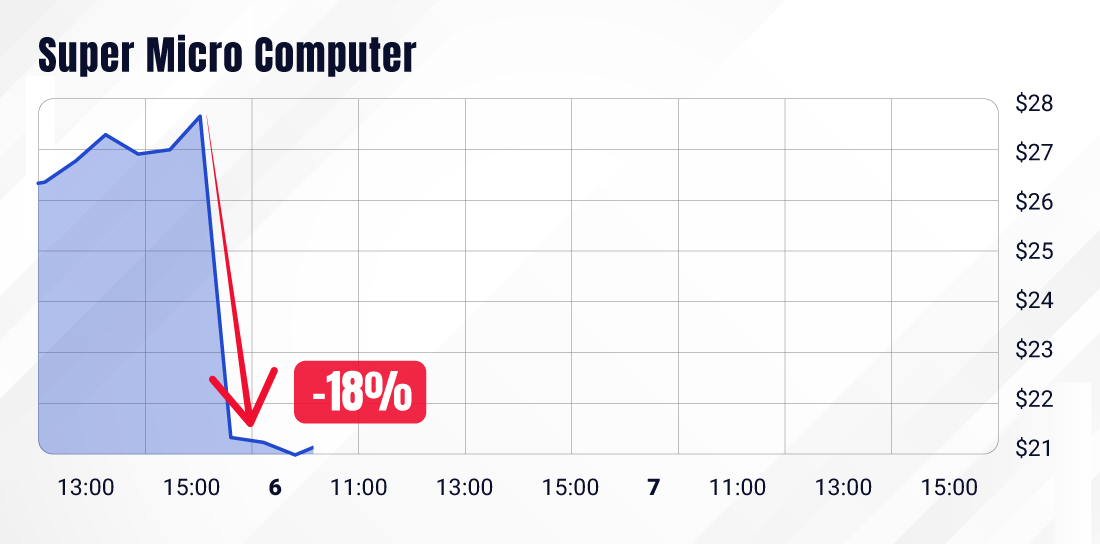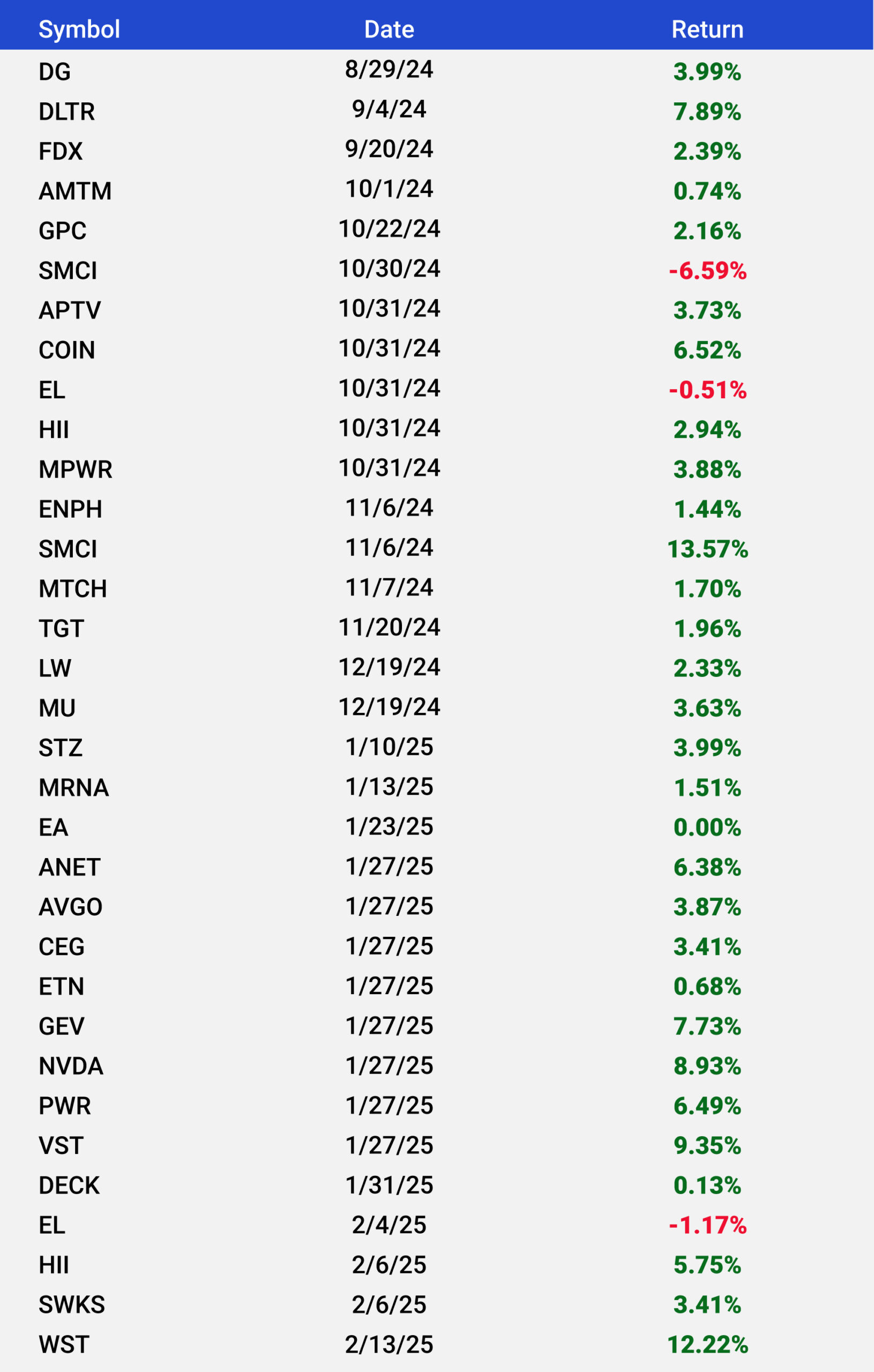
The Overnight Reversal Guide

Making money in the market is not always easy. But it doesn’t have to be hard, either.
Understanding the patterns in the market can go a long way toward improving your results. Filter out the noise of the financial media and the finance bros on social media, and look at the numbers, look at the charts.
Do that for long enough, and you’ll see the same patterns play out again and again. Once you learn to recognize those patterns and capitalize on them when you see them forming, you’re in the money.
And I just identified one of the most reliable – and therefore most profitable – patterns in the market, one with an 83% win rate. This report is your guide to what it is, how it works, and how we’ll be capitalizing on it to cash in day after day, week after week, and month after month.
Every Dog Has Its Day
The financial media headlines on any given day usually focus on the biggest winners in the market that day. They cover the big movers… after you can’t make any money on them, of course.
But if there are winners, there must be losers. And those are the stocks we’re going to focus on here. The losers are called the “Dogs of the Day.” They’re the stocks you’d least want to own on the day they crashed and burned. But oftentimes the price drops are only a small part of these companies’ stories.
See, the market is far from rational. And Wall Street has an anxious, panic-prone personality, to say the very least.
If a company misses earnings expectations, that’s the story Wall Street trades on. It causes a wave of panic-selling as every investor rushes to get out and avoid seeing their gains evaporate. The algorithms will pile on and take the stock down even further.
But, in many cases, the other half of that story is that the company is doing just fine. Earnings are up and growing, just not at the rate Wall Street had hoped. And yet, the panic-selling drives the price of that company well below where it should be. It’s left as a Dog of the Day come 4 p.m. – but it’s also trading at an incredible discount.
As usual, Wall Street overreacted.
Take a look at this chart of Super Micro Computer over the course of two days. It illustrates my point perfectly…

You can see that on the first day, the stock got hammered after it missed earnings estimates. It was down a massive 18%. Bad news hit, people panicked, and they rushed to sell. But the price dropped too far, too fast.
That panic-selling created a temporary discount to the true value of the stock. Essentially, the market created an artificial dip for you to buy. Because while Super Micro did miss earnings estimates, the company was still executing well. Its earnings were up 181% despite falling short of expectations.
The smart money knows this scenario happens again and again. They know a stock will get pushed into far-too-cheap territory. And so the next day, they pile into it, triggering a rebound.

We will be taking advantage of that exact phenomenon by buying stocks on day one at 3:45 p.m. ET – just a few minutes before market close – and riding the rebound the next day as Wall Street’s panic ebbs and the market realizes the stock not only is still a great buy but is trading at a bargain thanks to the overreaction. This type of trade has the potential for overnight profits of as much as 354%.
And there’s plenty of opportunity to put this strategy to work. Our research shows that when a stock is oversold due to this kind of panic-selling, a rebound happens the next day about 83% of the time…
As the old saying goes, every dog has his day. And you’ll have yours too if you take advantage of the Overnight Reversal.
Every Hand’s a Winner…
Now, while playing the Dogs of the Day has a potential 83% win rate, some of the Dogs are in their position because they actually are terrible companies. Just because a stock crashed and burned doesn’t necessarily mean it’s set for a rebound the next day.
So we’re looking for companies that are solid but were hammered for various other reasons. We won’t be playing penny stocks whose luck has finally run out.
The results of taking that approach speak for themselves…

So, what goes into creating a potential Overnight Reversal?
The first factor I look for is solid underlying fundamentals from a company. When a company’s share price drops dramatically, it doesn’t always mean it’s the market overreacting. Sometimes a stock falls into “Dog of the Day” territory for perfectly valid reasons. We won’t be buying those kinds of stocks…
Beyond that, I’m looking for a company that dropped 15% or more in one day. Any drop that large is almost always an overreaction. Most stocks don’t deserve to lose that much value that quickly. The market simply overshoots in the short term.
In addition, sometimes secular market forces that have nothing to do with the financial performance of a given stock can cause a massive drop in many stocks. Wall Street often reacts to how it feels about the headlines rather than the reality of the situation.
This happened with Truist during the Silicon Valley Bank crisis of March 2023. Traders suddenly became terrified that more banks would fail. And despite Truist having just released strong earnings and great financials, its stock was crushed, dropping 17% in a single day.
And the Overnight Reversal saw it rebound 12% the next day.
So every day, I use my system to scan the entire market, looking for stocks that have dropped 15% or more by 3:30 p.m. ET. Then I analyze whether those stocks will…
- Rebound the next day – presenting a fast profit opportunity
- Keep falling – the result of deeper financial issues
- Show no clear pattern – in which case we avoid the trade.
Once I find the best Dog of the Day, I will send you all the trade details in an alert – the ticker, my analysis, and step-by-step instructions on what to do to profit from the situation. That alert will go out at 3:45 p.m. ET and you can place the trade if you choose to.
The next day, I’ll send you another alert letting you know when to close out the trade for a fast, reliable gain.
Even better, this system works in reverse too.
I call these the Darlings of the Day. They’re stocks that surge 15% or more in a single session. And, just as the market tends to overreact on the downside, it also overreacts on the upside.
When a stock jumps 15% or more in one day, it’s often experiencing excessive buying pressure that isn’t sustainable. The next day, reality sets in, the excitement cools off, and the Darlings almost always pull back.
I will also be sending you alerts on how to play the Darlings at 3:45 p.m., just like their Dog counterparts. Some days you’ll get both, giving you a remarkable market-neutral opportunity to play both sides of the market simultaneously.
I’d like to give you longer than 15 minutes, but unfortunately that’s as long as our advantage lasts. If you wait until the next morning, the stock will usually have already made its move. As long as you get in before the markets close at 4 p.m. ET, you’ll be set up for the best chance to reap plenty of profits overnight.
No matter what the broader market does, you can profit with the Dogs and Darlings of the stock market. You don’t have to worry what the market does – you can make money whether it’s moving up, down, or sideways.
Now on to how we’re going to trade the Overnight Reversal to maximize our returns: options.
Money Magnifier
Options are one of the most powerful ways to leverage your stock plays and maximize your gains. Unfortunately, many new investors are intimidated by them. But they shouldn’t be – and neither should you. Options are just as easy to trade as stocks, bonds, cryptocurrencies, or any other asset…
So what is an option?
In short, it’s a contract. An option gives its holder the right – but not the obligation – to buy or sell 100 shares of stock at a set price by a designated date.
Every option is linked to a specific security, like a stock, index, commodities future, etc. So whenever you place an options trade, its price will be affected by the movement of that underlying security.
Options come in two standard varieties: calls and puts. And options trade in lots of 100 shares (called contracts).
A call option gives you the right – but not the obligation – to buy 100 shares of a particular stock at a specific price (the strike price) before a specified date in the future (the expiration date).
The opposite of a call is a put. A put option conveys the right – but again, not the obligation – to sell 100 shares of a stock at the strike price by the time the option expires.

All options have expiration dates. It could be a matter of hours, days, weeks, months, or, in the case of certain options called LEAPS (Long-Term Equity Anticipation Securities), up to three years.
An option is directly linked to its underlying security – be it a stock, an index, a commodities future, etc.
For example, you could choose to simply buy 500 shares of Company XYZ, which is currently trading for $10 a share.
Excluding commissions (which are increasingly becoming a thing of the past), that will cost you $5,000. However, you might not want to buy 500 shares at the same time, or you might think the price for that is a little too steep.
So rather than buy the stock outright, you can buy call options on it – which are significantly cheaper per share. This gives you the right to buy the same 500 shares at a certain price at a certain time.
The key question you need to ask yourself is whether you think Company XYZ is going to go up or down.
If you think it’s going to rise, you buy calls. If you think it’s headed for a decline, you buy puts. You then need to decide on a strike price (your target price).
Next, you need to pick a time frame for your scenario to play out – the end of which is known as the expiration date.
Options prices vary depending on their expiration date and the strike price, as well as the volatility of the market and underlying security.
To illustrate how options can supercharge your earnings potential, let’s look at an example…
Let’s say Company X, which is trading for $100, misses earnings by $0.01 but still saw its earnings per share rise year over year. Wall Street overreacts to that miss with a major sell-off that causes the company to lose 20% of its value and drop to $80. That dramatic price action catches my attention.
After a bit of analysis, it’s clear that drop is due to Wall Street hysteria, not to the company’s actual financial performance, which remains rock-solid. So I send out my alert at 3:45 p.m. with instructions to buy the $85 calls on Company X. We will be in this trade for less than a day, so the expiration date doesn’t matter as much to us.
Say the option costs $1 per share, or $100 for the entire contract, and say we buy 10 contracts, so we’re in this trade for $1,000, giving us control of 1,000 shares.
Now, in overnight trading and early the next trading day, Company X rebounds as Wall Street realizes its mistake. By noon it has hit $90 and is holding steady, a 12.5% rebound. If you’d bought the stock at $80, you’d be sitting on a 12.5% return. Not bad for one night.
But what did the options do?
Because the share price of Company X is $5 over the strike price of your option, your 10 call option contracts are now worth at least $5 per share (probably more), or $500 for each contract. That’s a gain of 400%. I then send out another alert and we exit the trade with $5,000 in total.
If you’d bought the same 1,000 shares at $80, it would have cost you $80,000 and would have put much more money at risk.
For a Dog of the Day trade, we can either buy shares or use call options. In order to profit from a Darling of the Day trade, we would use a put option. Here’s how that would work.
Let’s use Company X again. But instead of dropping 20%, let’s say some positive media attention causes it to surge 15%, from $100 to $115. Yet we know the buying won’t last, because it’s mostly due to media hype. So we set ourselves up by buying 10 $1 puts with a strike price of $110. Just like before, we’re in this trade for $1,000.
Lo and behold, the next morning Company X comes back down to earth and crashes to $105, where it holds steady. Our puts are now worth at least $5 per share ($110 strike price – $105 share price = $5 per share). That’s $500 per contract, or $5,000 for the whole trade, a 400% gain. We cash out for a solid win while Wall Street suffers from buyer’s remorse…
Don’t Let Sleeping Dogs Lie…
And that’s the Overnight Reversal trade in a nutshell…
With this guide in hand, you have everything you need to make the Overnight Reversal trade work for you. Bull market, bear market, it doesn’t matter. With the Dogs and Darlings of the market, you’ll be profiting either way.
Keep an eye out for my Dog and/or Darling trade alerts at 3:45 p.m. and set up your trade based on my instructions to profit from Wall Street coming to its senses.
You can do the Dog strategy without options, but the Darling strategy requires them. If you’re not comfortable with options yet, that’s okay.
My suggestion is you start with the simple stock recommendations first.
Then, as you become more comfortable with the strategy – and the profits are coming in – you can start using options.
And I’ll help you get started. You can learn all about Options in my Options Masterclass video series here…